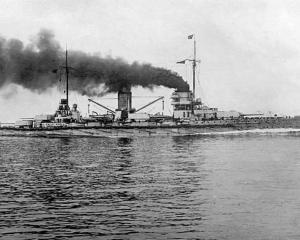Sumantra Maitra and Serena Antonia Starrs warn Australia faces difficult choices trying to be a United States ally and a friend of China at the same time.
Australia recently released its ''Defence White Paper 2013'' highlighting its role in the Indo-Pacific region, ascertaining its security and mercantile interests. This white paper comes at an important time, with the United States pivoting to the Asia-Pacific region, and the geopolitical scenario rapidly changing with the rise of China.
Because Australia is a major regional power and a prime ally of the United States and New Zealand, naturally, this white paper and subsequent grand strategy will have important implications for New Zealand and for the overall regional dynamics.
The first major white paper theme is the rise of China (and to a lesser extent India). Australia maintains it does not see China as a regional peer rival, and welcomes the rise of China as a responsible global power.
Even though Australia is a frontline US ally in the region, hosting a rotating US Marine base, this nuanced approach towards China is understandable. China is a major trading partner of Australia, the foremost rising power in the Indo-Pacific, and mining in Western Australia is heavily dependent on the Chinese demand and business cycle.
India is mentioned repeatedly in this white paper, as well as in the previous ''Asian Century'' paper, as a major partner in ensuring stability in the regional and global order.
Australia confirms its intention of working with China, India and other rising powers for regional stability and growth. Australia welcomed the opportunity to work alongside the US, respecting the ''time-tested'' alliance, and is buying Lockheed Martin F-35 stealth fighters.
Australia is also undergoing its own strategic rebalancing, drawing down from wars and interventions in Afghanistan and East Timor. Australia, however, stresses it need not have to choose between China and theUS in the near foreseeable future.
''The relationship between the United States and China, the region's and the globe's two most powerful states, will more than any other single factor determine our strategic environment over coming decades'' the paper states, furthermore stating that China's continued rise as a global power, the increasing economic and strategic weight of Asia, will shape the emergence of the Indo-Pacific as a single strategic arc in the future.
The paper, however, fails to answer some important questions. While it is understandable, and even praiseworthy, that Australia looks to have a balanced approach towards the two largest regional and global powers, often a nuanced pragmatic strategic calculation is detrimental for alliance dynamics, especially with the US.
Australia has also already backed down once from the Quadrilateral Security Dialogue comprising Japan and India, two of the regional democratic powers heavily sceptical about Chinese hegemony and its rise and constantly in a state of brinkmanship from the East China Sea to the Himalayas.
The soft stance towards China will be looked on as appeasement and might alienate allies and other democratic powers in the region opposed to China.
The growing economic clout of China, ever-expansive ''core areas of interest'' in the neighbourhood and an increasingly revisionist militaristic streak brings a delicate dynamic in the region.
With a 1.5% defence budget, Australia will not be able to be a responsible ally to the US. Even though Australia is a regional power, Australian military in its present size and form is nowhere comparable to regional powers like China, South Korea, Japan and India.
The challenges of the region are asymmetric and Australia, if it wishes to maintain its clout and respect, needs to step up its game and act like a regional power. It is not mentioned in the paper how Australia will manage its alliance responsibilities and prove to be a frontline power with decreasing military capabilities.
With the belligerence in the sea and trade routes in the Indo-Pacific, the Australian navy might be called upon often to maintain stability. Australia needs to be ready to take up the burden and challenge.
As Rory Medcalf, from the Lowy Institute mentioned, Australia needs to increase considerably its military budget to upgrade its space and missile tracking assets, fix up runways and ports for visiting naval planes and warships from the US and India, and take on joint patrolling responsibility of nearby sea routes and military games.
One needs to remember the present geopolitical situation, unlike the Cold War, is much more complex. During the Cold War, the two opposing camps had minimal trade and a stable bipolar balance of power. Now, the world is much more globalised and much less stable and balanced.
The situation in the Asia-Pacific region is eerily similar to pre-World War 1 Europe; economically integrated but politically volatile and fluid, with a rising authoritarian hegemon inevitably trying to make space for itself in an established global order.
There might be a situation where Australia will have to make a civilisational choice, or at least not be ambiguous about her loyalties. And this is an important reminder for New Zealand too, to design and develop a grand strategy for the coming decades.
As Walter Russell Mead mentioned, the greatest Game of Thrones is already on in Asia, and we are a part of it, whether we wish to be or not.
Sumantra Maitra is a tutor of International Relations and New Zealand Foreign Policy at the University of Otago. Serena Antonia Starrs is a postgraduate student of International Studies at the same institution.











